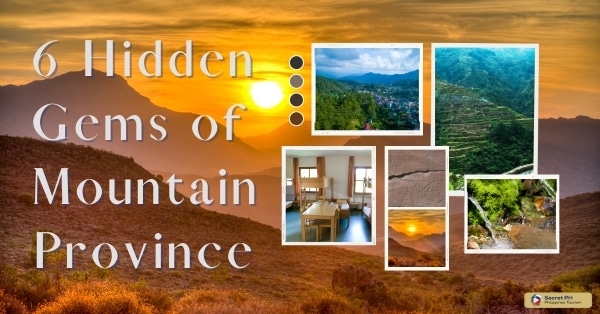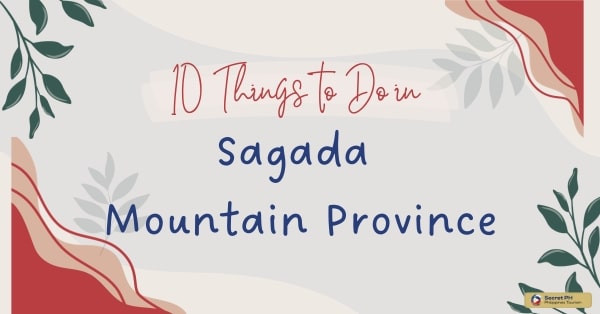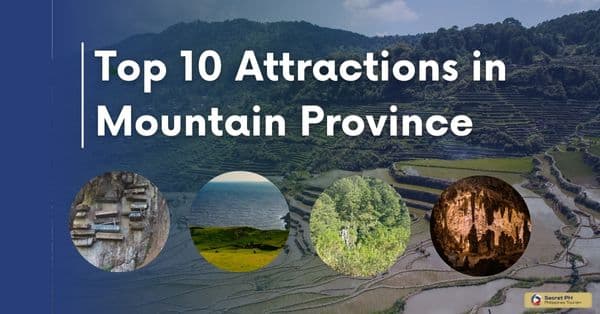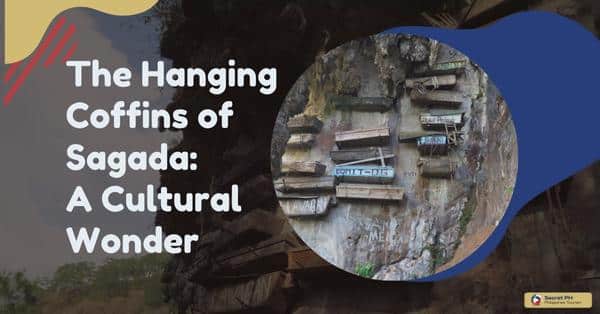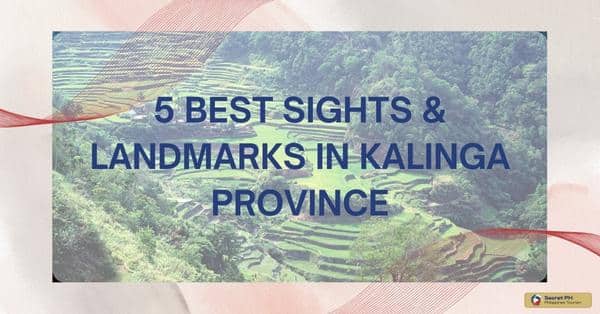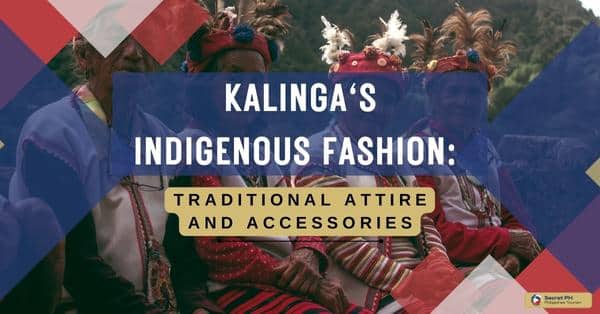The Cordillera Region of the Philippines is home to the breathtakingly beautiful rice terraces, which are a testament to the ingenuity and hard work of the indigenous people. These terraces have been carved into the mountainside over generations and are considered a masterpiece of agriculture. The rice paddies are not only a scenic sight, but also serve as a vital source of food and livelihood for the local communities. The terraces are surrounded by lush forests and provide ample opportunities for hiking and exploring.
In this blog, we will take a deeper dive into the history, unique features, and significance of the rice terraces of the Cordillera Region. We will also share some tips on how to visit and experience them for yourself.

The Rice Terraces in the Cordillera Region
The Rice Terraces in the Cordillera Region of the Philippines are a true wonder of the world. These ancient terraces, also known as the “stairway to the sky,” are a testament to the skill, ingenuity, and hard work of the indigenous people. The terraces are carved into the steep mountainsides, creating a series of stepped platforms that are used to grow rice.
These terraces not only provide food for the local communities, but they also play an important role in preserving biodiversity. The terraces are a unique blend of natural beauty and human engineering and are a must-see destination for any traveler.
History and Culture
The Rice Terraces of the Cordillera Region in the Philippines are no exception. Carved 2000 years ago by the people of the Ifugao community. These ancient Rice Terraces form an intricate network that cascades down the steep mountainside. The Ifugao people carved these terraces into the steep mountainsides using only basic tools and their bare hands.
The construction and maintenance of these terraces have been passed down through generations and are still done in the traditional way today. The Banaue Rice Terraces are not just a beautiful tourist destination, but also a living cultural heritage.

Origin of the Rice Terraces
The terraces were constructed by the indigenous people of the region, known as the Ifugao. These people were skilled farmers who relied heavily on rice cultivation for their survival. However, the mountainous terrain of the region presented a challenge for traditional farming methods.
To overcome this challenge, the Ifugao people began carving the steep mountainsides into a series of stepped platforms, known as the rice terraces. These terraces were designed to make the most efficient use of the limited flat land. To capture and channel water from the mountain streams for irrigation. The construction of the terraces was a massive undertaking and required the collective effort of the entire community.
They used basic tools such as wooden hoes, baskets and carabao-drawn plows to shape the mountains into terraces. The process was done entirely by hand, with no machinery involved. The terraces were built to last and have been passed down through generations, with each generation maintaining and preserving them. Today, the rice terraces are a living cultural heritage, a testament to the skill, ingenuity and hard work of the Ifugao people.
Cultural Significance of the Rice Terraces for Indigenous Communities
Rice Terraces have a profound cultural importance for the Indigenous communities. These terraces have been sculpted from mountainsides over centuries, allowing farmers to raise rice without additional land or water while practicing sustainable farming.

- Food security: The rice terraces provide a reliable source of food for the indigenous communities in the Cordillera Region. Rice is a staple crop and the terraces ensure a steady supply for the local population.
- Cultural Heritage: The rice terraces are a living cultural heritage that reflects the history, traditions and ingenuity of the indigenous communities. The terraces have been passed down through generations and are still maintained in the traditional way.
- Social cohesion: The construction and maintenance of the rice terraces require the collective effort of the entire community. This promotes social cohesion and a sense of community among the indigenous people.
- Economic Development: The rice terraces contribute to the local economy through tourism, as well as the sale of rice and other products grown on the terraces.
- Environmental Conservation: The terraces are built in harmony with the natural environment, they preserve biodiversity by providing habitats for wildlife and protecting the mountain slopes from erosion.
- Spirituality: The rice terraces hold spiritual significance for the indigenous communities. They are often associated with their ancestor’s spirits, and are considered sacred and important for their culture.
- Identity: The rice terraces are an integral part of the indigenous communities’ identity, reflecting their unique culture and connection to the land.
Preservation Efforts
The preservation of the Banaue rice terraces is a collective effort of the local community and government. The terraces are not just a tourist destination, but also a vital source of food and income for the indigenous people. The following are some of the preservation efforts that have been implemented to ensure the longevity of the terraces:

- Community-based maintenance: The local community is responsible for the maintenance of the terraces. They use traditional methods passed down through generations to repair and strengthen the terraces.
- Organic farming: To minimize the use of chemical fertilizers and pesticides, the community has implemented organic farming practices which also preserve the biodiversity around the rice terraces.
- Sustainable tourism: To promote responsible tourism, the local community has implemented guidelines to minimize negative impacts on the terraces. Visitors are encouraged to respect the local culture and not to damage the terraces.
- UNESCO World Heritage Site: The Banaue Rice Terraces were declared a UNESCO World Heritage Site in 1995, which has helped to bring attention to their preservation and conservation.
- Government funding: The Philippine government has provided funding for the preservation and maintenance of the terraces, including the construction of access roads, irrigation systems, and the implementation of sustainable farming practices.
- Education and awareness: The local community has organized educational programs and initiatives to raise awareness of the importance of the terraces, and to promote their preservation among the local population and visitors.
Touring the Rice Terraces
Touring the Rice Terraces is a truly unique experience that combines cultural immersion, breathtaking views and an appreciation for the beauty of nature. As you tour these ancient landscapes, you will be awe-struck at its beauty and by its cultural significance. This part of the world is both beautiful and historic and a visit to this area is sure to be both memorable and enriching.

Best Time to Visit
The best time to visit the Banaue Rice Terraces in the Philippines depends on what you are looking to experience during your visit. The terraces are beautiful year-round, but the scenery and weather can vary depending on the time of year.
- Dry Season (April to May): This is the best time to visit if you want to see the terraces in their full glory. The weather is dry and sunny, making it perfect for hiking and exploring the terraces. The rice fields are also in the harvesting stage, offering a picturesque view of golden rice paddies.
- Rainy Season (October to November): The terraces are just as beautiful during the rainy season, but the weather can be unpredictable. The terraces are lush and green, and the waterfalls in the area are more active. However, some of the trails may be muddy and slippery, making them more challenging to navigate.
- Culture and Festivals: The Ifugao people celebrate several festivals throughout the year. This includes Banaue Rice Terraces Festival, which takes place in April. This is an excellent opportunity to experience the local culture and traditions.
Best Places to See and Explore
The Banaue Rice Terraces in the Philippines are a UNESCO World Heritage Site, and are considered to be one of the country’s most spectacular natural wonders. The terraces are spread out over several towns and villages. Some of the best places to see and explore in the Banaue Rice Terraces include:
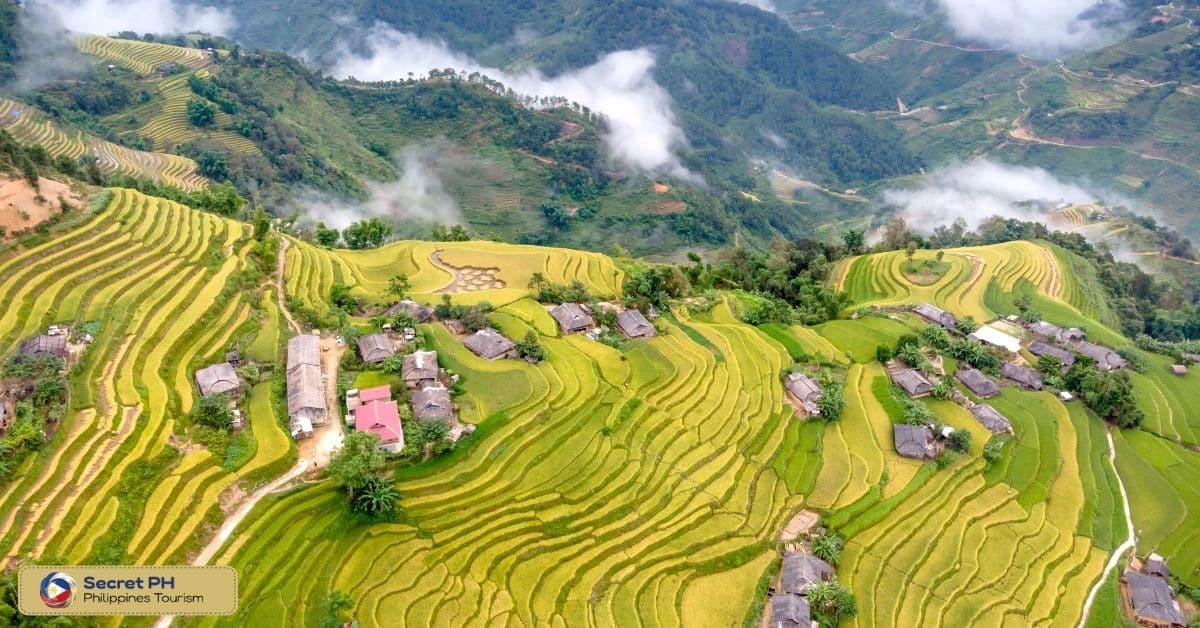
- Banaue Viewpoint: This viewpoint offers panoramic views of the terraces, and is considered to be one of the most popular spots for taking pictures.
- Batad Rice Terraces: These terraces are considered to be the most picturesque and well-preserved in the region. They are located in the town of Batad, and can only be accessed by foot. The trek to the terraces is steep and challenging, but the views are well worth the effort.
- Mayoyao Rice Terraces: These terraces are located in the town of Mayoyao, and offer a different perspective of the terraces. They are known for their unique shape, and are best viewed from the Mayoyao Ridge.
- Hapao Rice Terraces: These terraces are located in the town of Hungduan, and are known for their unique and intricate design. Visitors can take a bamboo raft ride along the Hapao River to get a different perspective of the terraces.
- Tam-an Village: This is one of the oldest villages in the region and is home to traditional Ifugao houses. Visitors can explore the village and learn about the traditional way of life of the Ifugao people.
- Bocos Point: This viewpoint is located in the town of Bocos, and offers a panoramic view of the terraces. The viewpoint is located at the edge of a cliff and offers a breathtaking view of the terraces.
Popular Activities to Enjoy
The stunning beauty of the Banaue Rice Terraces can be enjoyed through a variety of activities. Whether you’re looking for adventure or want to take some time out to relax, there’s something for everyone.
Explorers can go on trekking and camping excursions, while hikers will love the many trails around the area. Immerse yourself in culture with local tours, or take part in traditional rituals and ceremonies. Cycling is also popular here, so rent a bike and explore the terraced wonders!
Foodies shouldn’t miss out on savoring authentic dishes while taking in the mesmerizing views of the terraces. Or find inner balance at one of the retreats offering yoga workshops set amidst this amazing landscape.

In Conclusion
The Rice Terraces in the Cordillera Region are unique and mesmerizing wonders of nature. It is considered as one of the most extensive and well-preserved examples of ancient man-made landscape. They have been recognized by UNESCO as a World Heritage Site.
The terraces provide an amazing backdrop for activities ranging from trekking to cycling and yoga. Visit for a day or spend some time at a retreat to enjoy local cuisine, rituals and ceremonies.

